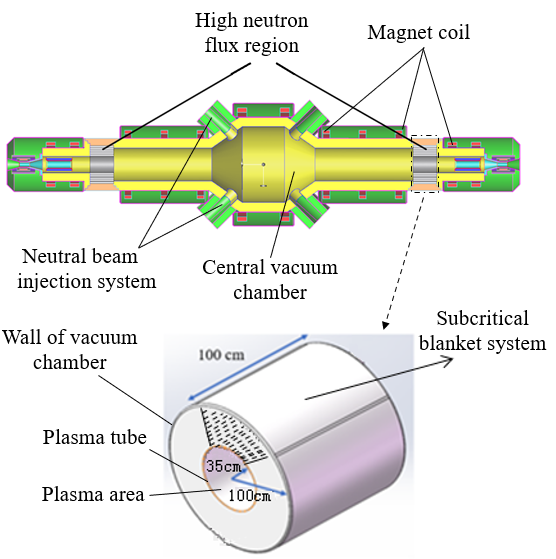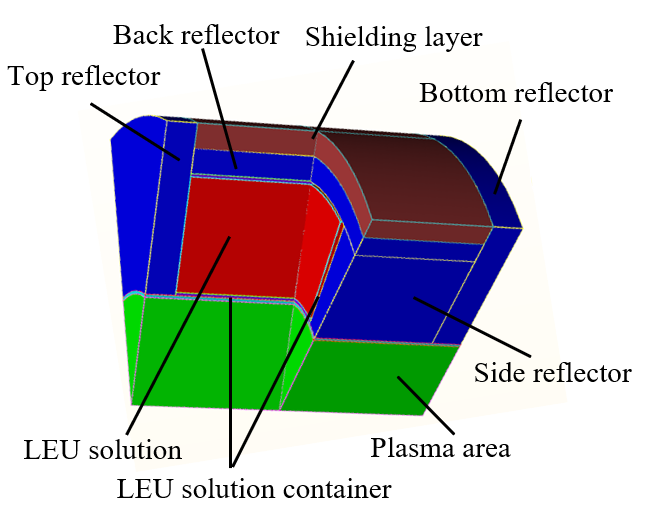
Recently, a research group led by Prof. HAN Yuncheng from Hefei Institutes of Physical Science (HFIPS), Chinese Academy of Sciences (CAS), along with Prof. XIONG Houhua from Hubei University of Science and Technology, proposed a new 99Mo production design.
The subcritical blanket system (SBS) assembly they introduced was fueled by a low-enriched uranium (LEU) solution, and powered by a compact deuterium-deuterium (D-D) gas dynamic trap fusion neutron source (GDT-FNS).
The research results were published in Nuclear Science and Techniques.
The most commonly used diagnostic radio-isotope is the Technitium-99 (99mTc), owning to its ideal characteristics of Single Photon Emission Computed Tomography (SPECT). However, the production of 99mTc (T1/2=6 h) is tied to its parent radionuclide molybdenum-99 (99Mo, T1/2=66 h). The major production paths are based on research reactors and accelerators. Accelerator-based methods tend to use deuterium–tritium (D–T) neutron sources but are hindered by the high cost of tritium and its challenging operation.
In this study, a Low Enriched Uranium (LEU) Subcritical Blanket System (SBS), driven by Gas Dynamic Trap Fusion Neutron Source (GDT-FNS) with 1.0×1014n/s D-D neutron, was put forward as a game-changing method for 99Mo production. The GDT-FNS offered a notably high neutron intensity, presenting a key advantage in this process.
Researchers conducted an extensive Monte Carlo-based neutronics analysis and calculation, focusing on various aspects such as subcritical multiplication factor (ks), uranium concentration optimization design, reflector, shielding layer, and neutron flux distribution within the SBS.
The results showcased that the SBS successfully met the criteria for nuclear critical safety design (ks < 0.97) while maintaining a remarkable capacity for 99Mo production.
With a solid angle of 5π/18 (100o), the proposed SBS can generate around 157 Ci of 99Mo during a stable 24-hour operation. Two or three SBSs can be arranged simultaneously for reaching higher 99Mo production.
"This scheme has many advantages," said ZENG Qiusun, member of the team, "like high production efficiency, low nuclear waste generation, and cost-effectiveness. It’s a promising avenue for the production of the vital medical isotope 99Mo."
The potential socio-economic impact of implementing this novel approach holds significant promise for fulfilling the increasing demand for 99Mo, thereby addressing a crucial need in medical diagnostics and treatment worldwide.
This work was supported by the Anhui Provincial Key R&D Program and International Partnership Program of Chinese Academy of Sciences.

Schematic diagram of the LEU solution SBS driven by GDT-FNS (Image by ZENG Qiusun)

Schematic structure diagram of SBS 99Mo production model (solid angle is 5π/18) (Image by ZENG Qiusun)